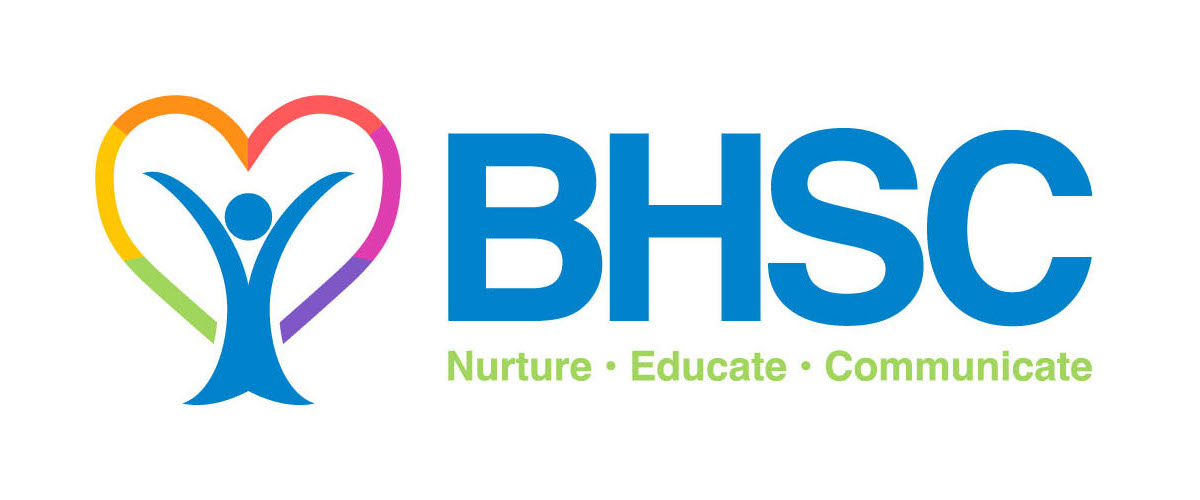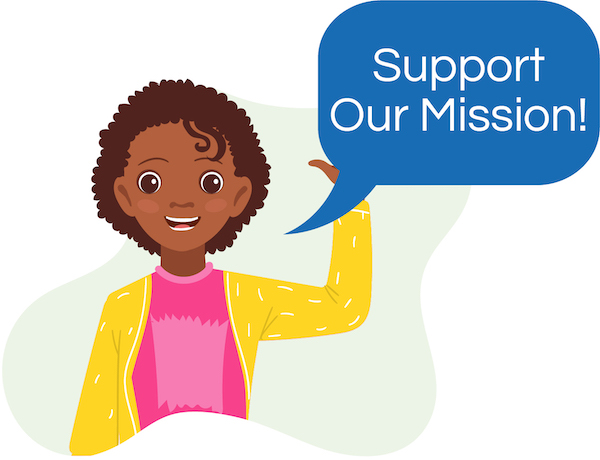Every year around this time, I remember back to the days of being a parent of two young children- who like most children were consumed with thoughts of an upcoming visit from Santa Claus and all of the toys that they would be receiving. Going even back further into ancient history I can also remember quite vividly the days when I as a young child feverishly awaited the delivery of the Sears “Christmas Catalogue” spending hours poring over it to dream about what I desired from Santa to bring to me. Even though my family had little money that did not stop “visions of sugar plums” from dancing around in my head. A large part of the Christmas experience rests in this give-get relationship children have with the idea of Santa Claus and his bringing “stuff” to them.
I am not writing this blog to say that give-get relationship with St. Nick is wrong or even that it is bad for children. I am writing to expand the idea of how we can use Christmas as an object lesson for our children to promote attitudes and values that will suit them well with their personality development through childhood and adolescence into an emotionally healthy adulthood. I am trying to give an outlook glance into the trappings of a commercial Christmas that heavily try’s to influence children into thinking this Holiday is only all about “what you can get”.
So let’s begin with what Christmas truly might be all about, beyond the obvious gift giving- the answer to this simple notion is complex because of the many lenses we may look through to promote, celebrate and understand the meaning of this holiday.
One lens to look through in thinking about the true meaning of Christmas is certainly the Christian perspective emphasizing the birth of Christ. This lens is a unique perspective which centers on the spiritual component of a baby (Jesus) being born into the world who will ultimately live and die for believers eternal salvation.
Another perspective that is even more common than the Christian perspective is the secular one that emphasizes a visit from a mythical jolly old man (Santa) with the receiving of gifts to good boys and girls in a season of wonder and hope.
On our multi-cultural and diverse globe we will find a majority of the world that does not even celebrate a Christmas holiday but rather has religious equivalent holidays around Christmastime or throughout the year to mark various celebrations of life, love and giving.
So then, how can we take our various traditions with this holiday and turn them into an object lesson for children that teaches and emphasizes a universal meaning of Christmas, no matter your perspective.
After we cut through all of the various lenses and perspectives of Christmas and associated holidays worldwide we can conclude that they all share a common similar belief. For this discussion Christmas as a celebration is not just about Santa, or the baby Jesus, it is ultimately about teaching and imparting the values of love, caring and joy which are the hallmarks of the Christmas spirit and other international festivals and holidays.
The Christmas holiday affords parents a unique opportunity to use the seasonal traditions to teach some important components of Emotional Quotient or EQ. While most of us are familiar with the term IQ (which stands for Intelligence Quotient) and is a measurement of our cognitive capacity, fewer may be familiar with what EQ or Emotional Quotient means.
EQ is a measurement of a person’s ability to monitor his or her emotions, to cope with pressures and demands, and to control his or her thoughts and actions. The ability to assess and affect situations and relationships with other people also plays a role in our emotional intelligence.
Studies have been done on possible ways that a high or low EQ might affect a person’s abilities to perform under pressure, resolve conflict, and cope with challenges. For example, someone who has a low EQ might lack self-confidence and be pessimistic, both of which might affect his or her performance when doing certain tasks. In broadly expanding research on EQ, some studies have linked this measurement to communication skills and other social skills that people either lack or possess as a correlate to their emotional intelligence. EQ is a pretty “big deal” as a role player when we look at vocational and relational success and outcomes in adults.
Where does this EQ development come from- it all begins in our childhood.
Since the development of one’s emotional quotient is rooted in childhood experiences and teachings, Christmas becomes a natural teachable moment for parents seeking to explicitly teach and reinforce values and behaviors commonly associated with high EQ. The values associated with Christmas become a perfect pairing for any parent in this task.
If you ask most children to tell you what Christmas is all about you likely would get an answer somewhere along these lines- “Christmas is about decorating the Christmas tree and putting up the lights and decorations”, or it may sound like- it’s about “Santa Claus and getting presents”- usually spoken in a way that is roaring with excitement and animation. That kind of response is to be expected as Christmas is an exciting time of year for children. But if we want to elevate our children’s Emotional Quotient we can use Christmastime to begin teaching about some other meanings of the Christmas Holiday…and we can’t begin this too soon.
We can do a few simple things to begin having our children think about Christmas from an EQ perspective.
1. Be intentional with your messaging about sharing, appreciation and joy. You will need to put these value concepts into developmentally appropriate language and reinforce them over time. Children under three are developmentally self-centered. At this age it’s not reasonable to expect that they have the cognitive capacity or life experience to fully understand the concepts of sharing and giving. They have a “me-me,” “this is mine” attitude. So it becomes important that with younger children, we give them words to help anchor their feelings with an identifiable name. In addition, with our very young children we need to begin talking a certain language around them- a language aimed toward expressing gratitude- even if they are too young to fully grasp gratitude as a value or concept- the words we use around them are important. The first step in building toward a solid EQ development begins with the language and lessons we impart to our youngest children.
2. After you lay a foundation in language and as your children get older, help your children begin to identify and express how they are feeling when they receive a present, when they give a present or what anticipation feels like when waiting for Santa. Of course you may also have opportunities to discuss disappointment if the child doesn’t get what they were hoping for or even the loss in finding out at some point that Santa is not a real person but a myth that is shared by parents with their children. The emphasis on helping identify and codify feelings is also where you can help children understand that not all children may be as fortunate as they are. The reality is that there are children in our neighborhoods and throughout the world where Christmas may be felt somewhat differently than they may experience it. This is a ripe opportunity for you to begin to teach and encourage “empathy” with your children.
3. As children get to that age cognitively where they are beginning to understand that Santa may not be real (variable but usually sometime around ages 8-10) a great way to apply EQ behaviors to the Emotional Quotient groundwork you have been building is to find ways for you to have your children “take action” with their thoughts and feelings about what Christmas is about beside Santa and gifts. These activities are aimed at taking the child out of a “me-me” perspective and having them identify with a broader outlook of giving to and helping others. Be creative here- try things like baking cookies together to deliver to a community party, or make donations of some kind to programs helping children who may not have much for the holidays. Deeds and behavior like this will put into action for your child the connection that Christmas is a much larger proposition than just being a good girl and having Santa bring you what you desire on the 25th of December.
4. You can use Christmas to intentionally teach and reinforce things like family traditions, the joy of being together with those you love, being appreciative for what we have, and giving to others. These are just a few of the lessons we can share with our children that will last decades into the future and span generations in your family. Older children can easily put these lessons into behavioral practice by volunteering at activities where other children or adults may be in need around Christmas time.A favorite activity that we always used was to “adopt” a needy family with a child close in age to our own children. We would go shopping for our adopted family and our children would be assigned to pick out something for their adopted brother or sister. Over time as our children got older they enthusiastically anticipated this Christmas activity and began to seek out different ways to help others at Christmas.
5. Finally, we do not have to abandon the “Santa Myth” with our children to teach them a “larger” meaning of the holiday. Children of all ages wait all year for Santa and Christmas. Explicitly talking and teaching around the EQ lessons of Christmas doesn’t mean we must leave Santa completely out of Christmas. Parents can still play the “Santa game” with their children even when they come to know that it is all pretend. They can make lists, sit on Santa’s lap at the mall, and leave out cookies and milk on Christmas Eve. This will not rob them of their joy of the season, and it gives parents the opportunity to tell their children about other qualities of the “spirit” of Christmas which can push them to think beyond themselves and their own gratification.
Again, by way of example with our own children we never gave up the believing in Santa as a symbol of hope, joy, magic and wonder in the spirit of Christmas. The buzz word around our house, even with our adult children, and now with our grandchildren is – Believe!
To conclude, many parents use religious meaning to impart some of the EQ ideas I have talked about and to provide their children with a fuller context to the meaning of Christmas. But, any parent regardless of their perspective can use the holidays and Christmas Day to talk about the “another” level of meaning to Christmas in terms of helping their child to develop emotional quotient. In the course of your children’s lives into adulthood EQ may play just as important a role as IQ does in helping them attain personal, academic, vocational and social successes.
I wish we all could see the world through the eyes of a child around this time of year. They see a hope and wonder in the world that is sometimes forgotten as we grow into adulthood.
I hope this helps you think about some ways where you can use Christmas to widen the perspective that your child brings to this holiday season in order to set some values and behaviors in motion that will serve your child well into their own adult years.
Merry Christmas and Happy Holidays to you and to those you cherish, joe cozzo




